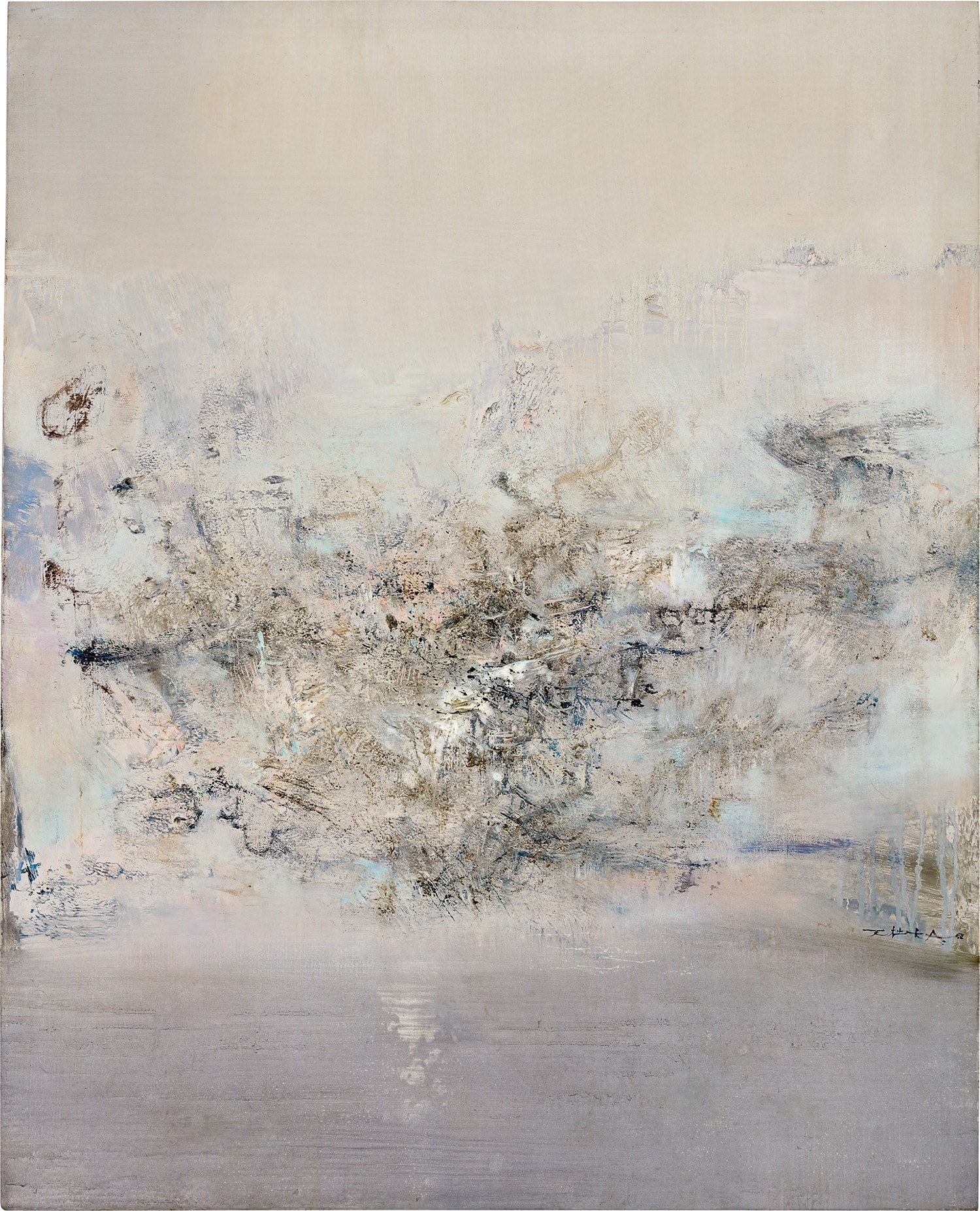

Property of a Distinguished Private Asian Collector
20
Zao Wou-Ki
12.2.69
signed ‘Wou-Ki [in Chinese] ZAO.’ lower right; further signed, titled and dated ‘ZAO WOU-KI “12.2.69.”’ on the reverse
oil on canvas
81 x 68 cm. (31 7/8 x 26 3/4 in.)
Painted in 1969, this work is to be accompanied by a certificate of authenticity issued by the Fondation Zao Wou-Ki. This work will be referenced in the archive of the Fondation Zao Wou-Ki and will be included in the artist's forthcoming catalogue raisonné prepared by Françoise Marquet and Yann Hendgen. (Information provided by Fondation Zao Wou-Ki.)